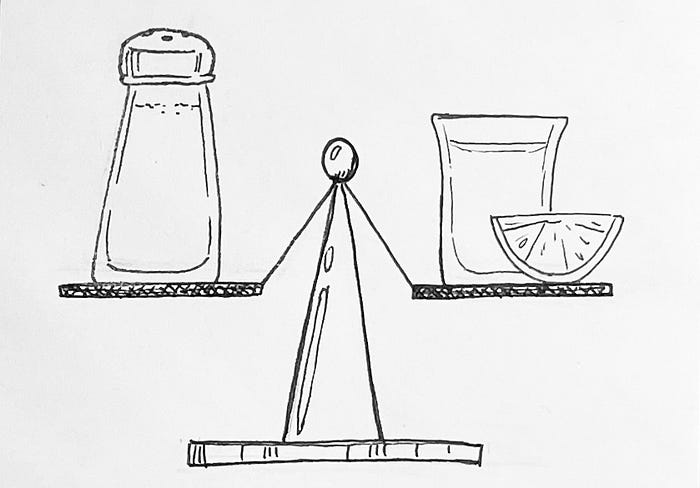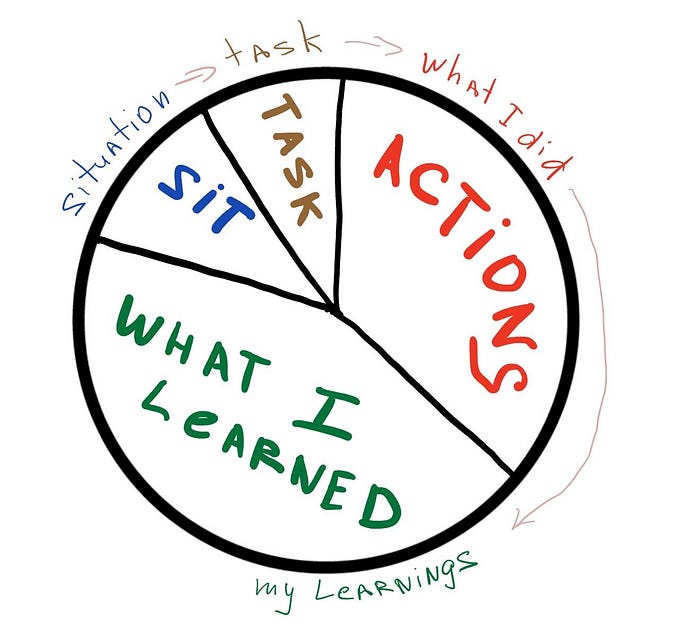
If you’re going to be salty, bring tequila and limes
How product roadmaps can bring balance to your UX design process
This article is day 17 of a 31 day series. A mash-up of the Inktober 2022 prompt list and UX terminology. Read more about the challenge here.
Day 17 | Inktober prompt: Salty | UX Term: Product Roadmap
We don’t call it that
I’m sure I’m going to hear it from someone. I’ve been using the term “Product Roadmap” to describe the process I will share with you today for a while now. But… when you’re working with a product team, they might have their own version. I tried to find a source of truth or something definitive, and I couldn’t. I came across UX roadmaps, but they were different, and focused more on the flow from one piece to the next. What I use is more like a suped-up impact/effort matrix. Either way, no need to get salty about, just take in the general advice, then call it what you will!
What is a product roadmap?
A product roadmap is a method for prioritization and planning, that lists the features of a project. Each feature has assigned to it a brief description, a score for impact and effort, acknowledgement of the goals it is meeting, and and a priority rating based on all of that. So basically it’s answering the following questions:
- what is the feature?
- what business/user goal will it address?
- how difficult will it be to implement?
- how much of an impact will it have on the product?
- when should we implement it? now? soon-ish? the distant future?
I typically gather the bulk of this information after clearly defining a task flow and user flow for the product I’m working on. Since we’re not talking about either of those today, I’ll try to be brief.
The task flow allows me to identify individual tasks that a user is likely to attempt with the product. It’s broken down step by step so we can start to identify the screens that they’ll land on, and the individual points of interaction.
The user flow expands those tasks to identify how they all work together as a system, and identifies overlaps as well as decision points that may result in alternative paths.
In the end I can look at these flows and generate a list of all of the screens that a user might land on, and beyond that I can describe every point of interaction. For example, on the Task screen, they searched for “cut limes” so I now know that I need search functionality on the Task screen. Once it’s all broken down like that, it does kind of start to feel like magic. Or like you stole the answer sheet without knowing that you stole it. But don’t worry, I won’t tell anyone.
Now beyond tasks I also want to consider information that was uncovered during research leading up to this point. This can be market research, insights from stakeholder and user interviews, as well as best practices for usability and interaction design.
Why is it important to UX?
All of the work that goes into developing this product roadmap comes down to giving users the best chance of success. Beyond that it allows for more decisive action. To satisfy every want and need in a product is the ultimate goal, but we also have to consider the time it would take to develop that. It’s that extra bit of consideration, that prioritization of effort, that allows us to more quickly reach a state where we can share the product with users, and continue moving forward. And that, my friends, is what we call bringing balance to the force. Or to your UX project, either way… balance is achieved. Namaste.
Takeaway
All we can do is all we can do. In the real world there are limitations on time and resources. To make the most of those, we need to be strategic in how we spend each. The product roadmap (as I’m calling it for now and forever no matter what anyone tells me) allows you to balance those efforts in the most impactful way possible.
But remember, garbage in, garbage out. If you don’t make sure that what you’re putting in is based on solid research and clearly defined goals, you might as well not do it at all. And I’m serious here, because while we got through this breakdown pretty quickly, there’s quite a bit of effort that goes into compiling this list. There’s no fluff here. So keep that in mind and you’ll be doing shots in celebration of your product launch in no time. Plus I know you’ll do it right. Especially now that you have a cheat sheet.








